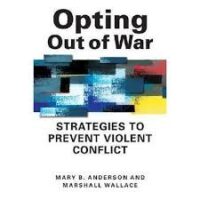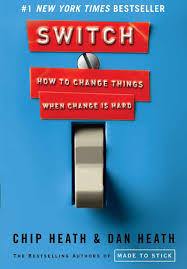
Bright Spots
This is the latest of a series of posts on teaching peace and conflict studies that will find their way into the instructor’s guide for From Conflict Resolution to Peacebuilding.
Here, I want to briefly discuss the importance of concepts and then spend more time on what I think is the most important concept we could and should cover in introductory courses in peace and conflict studies.
The Importance of Concepts
The next post will discuss the logic behind backward design in teaching in general. It’s an intentional approach to teaching conceptually tough material that I was introduced to by Oberlin music theory professor, Brian Alegent at my fiftieth reunion in May (yes, Oberlin has strange reunions).
Among other things, Brian and others argue that our students come away from our courses with an ability to use the key concepts they encounter. Obviously ours are not the same as those in music theory.
Nonetheless, the two fields have one thing in common. You can’t demonstrate mastery of the subject until you use its ideas in a new context. In Brian’s case, that means being able to make sense of a new musical genre. In mine it means being able to take peacebuilding concepts and use them in dealing with a conflict the student encounters in her/his life.
Too Many Concepts/Too Little Time
In writing my book, I also realized that I covered more concepts than most instructors will be able to cover in a single semester. That would include me, since I know I couldn’t cover everything in the book in fourteen weeks. In fact, in a field like ours that lacks a paradigm, the instructor is invariably faced with a tough choice in deciding which issues to concentrate on.
That’s especially true if, like me, you are an inveterate story teller who tends to get lost in the details.
Bright Spots
I can’t tell anyone which concepts to concentrate on. I can illustrate how to effectively use one here, and I’ll add a few others in the guide itself.
Here, I want to focus on one that brings me to one of the dilemmas I have always faced in the nearly forty years I’ve taught about peace and conflict.
I often find myself having to reconcile two pedagogical pressures which pull me in very different directions, both of which need to be included, especially in an introductory course.
On the one hand, we need to analyze the world’s problems which leads us to focus on what’s wrong and teach courses that are so pessimistic that George Lopez called the “Gloom and Doom 101” in his inaugural address to what is now the Peace and Justice Studies Associaition more than thirty years ago. On the other hand, we also want to empower our students, which I’ve always done by emphasizing what works or, in Lopez’s terms, what gets us beyond the gloom and doom.
 On the other hand, I’ve decided to spend a lot more time on the “good news” than the “bad.” I do so in part because my colleagues in other social science departments do a good enough job of explaining the world’s ills. In peace and conflict studies, we also have to give some hope if we hope to empower them enough to take some more courses, let alone build a career in the field.
On the other hand, I’ve decided to spend a lot more time on the “good news” than the “bad.” I do so in part because my colleagues in other social science departments do a good enough job of explaining the world’s ills. In peace and conflict studies, we also have to give some hope if we hope to empower them enough to take some more courses, let alone build a career in the field.
Therefore, I’ve decided that we could and should focus on the evidence that building a more peaceful world is at least plausible. In recent years, I’ve focused on what Chip and Dan Heath call bright spots and public health scholars refer to as positive deviance.
The logic behind the concept is deceptively simple. The Heaths and others argue that even in the most difficult of circumstances, something is likely to be working. That’s also the logic behind Appreciative Inquiry which should also be getting more attention in our community. Or, as Bright Spot Ministries puts it in the logo that I used at the top of the blog, there are people who listen, love unconditionally, give small gifts, and more even under some of the worst conditions imaginable.
In our field, Mary Anderson and Marshall Wallace made a similar point in their book Opting Out of War in describing individuals and communities that do not go down the road to violent conflict. Then, most of them ask, how could you build on those outlying cases and build something that Mary and Marshall’s colleagues say “adds up to peace.”
 Oddly enough, I had an exercise in applying what bright spots mean beyond the material I covered in the book over the weekend when I read Maggy Paxson’s remarkable, The Plateau, which explore a region in France that harbored Jews and other refugees during World War II and is doing the same thing today. What, Paxson asks, makes the area around Le Chambon so unusual? How could you build on that and effectively combat evil?
Oddly enough, I had an exercise in applying what bright spots mean beyond the material I covered in the book over the weekend when I read Maggy Paxson’s remarkable, The Plateau, which explore a region in France that harbored Jews and other refugees during World War II and is doing the same thing today. What, Paxson asks, makes the area around Le Chambon so unusual? How could you build on that and effectively combat evil?
Needless to say, Paxson doesn’t get to a definitive answer, though she did make me think about these questions a lot.
You could discuss Paxson’s ideas and play a clip of an interview with her—at this point the only available ones are very long, but there will be more since the book is new. Without that, you could show this short clip of Dan Heath talking about their book, Switch: How to Change When Change is Hard.
 The key, though, is to get your students beyond your presentation or hers. There are at least two ways of doing that. First, you could have a general discussion about bright spots and examples your students can come up with from what they know about conflict in general or from their own experience with it. Second and more importantly, you might have a group of students spend part of the semester looking for, understanding, and presenting their finds on some bright spots in the field as part of your assessment of their work.
The key, though, is to get your students beyond your presentation or hers. There are at least two ways of doing that. First, you could have a general discussion about bright spots and examples your students can come up with from what they know about conflict in general or from their own experience with it. Second and more importantly, you might have a group of students spend part of the semester looking for, understanding, and presenting their finds on some bright spots in the field as part of your assessment of their work.
I’ll be taking that up soon in a blog post on how learning about peace and conflict at least should be a team sport.
The views and opinions expressed in this article are those of the author and do not necessarily reflect the official policy or position of the Alliance for Peacebuilding or its members.
Also published on Medium.
